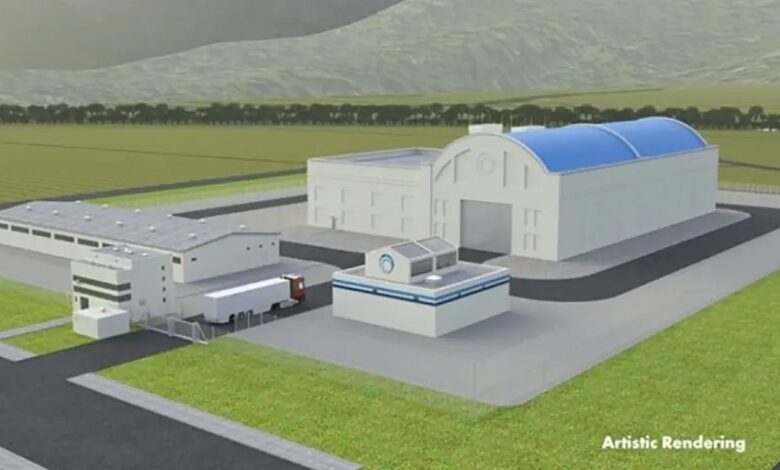US Nuclear Regulator Approves First Generation IV Nuclear Reactor – Will There Be More Power?

Reposted from Legal Insurrection
via Leslie Eastman
The last time we checked the nation’s energy sector, Biden-Harris Administration Banned drilling for gas and oil on 28 million acres in Alaska (reversing an order signed by President Donald Trump).
There is, however, better news on the nuclear energy front. This is good news because nuclear energy is the only rival to fossil fuels in terms of efficiency and cost effectiveness and deserves to provide energy at the civilizational level.
The US Nuclear Regulatory Commission has approved the construction of The first fourth generation nuclear domestic reactor
According to Interesting Engineering, the new Hermes reactor will be the first reactor built in the United States in 50 years that will not be cooled by light water. Instead, it will use a molten fluoride salt system and a tri-structural isotropic particle (TRISO) fuel bed design that will power the generator.
Molten fluoride salt reportedly has “excellent chemical stability and tremendous heat transfer capacity,” meaning it cools much more and dissipates heat much faster than the light water long used in US reactors.
The fuel cladding consists of hundreds of millimeter-sized uranium grains encased in multiple layers of a special ceramic, allowing each individual fuel section to have its own containment and pressure vessel, according to Ultra Safe Nuclear. The ceramic cladding is stronger and more resilient than conventional zirconium alloys, meaning it can withstand higher temperatures and neutron bombardment beyond the failure point of other fuels.
Additionally, since each individual fuel is so small, if one of them fails, the amount of radiation emitted afterward is greatly reduced — and less likely to cause further damage, thanks to the cooling system.
Generation IV nuclear power uses a system of fuel fabrication plants and reprocessing facilities that together overcome some of the shortcomings of previous generations of nuclear power plants.
To be classified as Generation IV, a system must meet or at least be capable of meeting the following criteria:
(1) it is much more fuel efficient than current plants;
(2) be designed in such a way that a major accident cannot occur, that is, a plant failure or external event (such as an earthquake) does not result in the release of radioactive material to the outside world;
[3] The fuel cycle is designed in such a way that uranium and plutonium never separate (“diverge”) but only exist in mixtures and with other elements. This makes creating nuclear weapons more difficult.
Work in progress about the new nuclear power plant in Tennessee, in the iconic city of Oak Ridge (famous for its importance in the Manhattan Project of World War II).
Kairos Power has begun construction of the Hermes Low Power Demonstration Reactor at Oak Ridge, the first Gen IV reactor approved for construction by the U.S. Nuclear Regulatory Commission. The Hermes reactor uses a high-temperature, fluoride-salt-cooled reactor design that differs from conventional light water reactors.
“The design of Generation IV nuclear power plants is revolutionary because they are planned to use a very different set of technologies to the reactors we use today,” Ross Peel, a professor at King’s College London’s Centre for Science and Security Studies, told Newsweek.
Unfortunately, we are lagging behind China when it comes to construction. They have already started building Generation IV. reactor late last year.
The Shidaowan nuclear power plant, which houses the world’s first fourth-generation reactor, began commercial operation on December 6, China National Nuclear Corporation (CNNC), one of the project developers, said.
“China’s self-developed high-temperature gas-cooled reactor has begun commercial operation,” CNNC said in a statement.
“This means that China has completed the world’s first commercial modular nuclear power plant using fourth-generation nuclear technology, marking the transition of fourth-generation nuclear technology from the experimental stage to the commercial market.”
Interestingly, more and more countries are reconsidering their nuclear power bans, possibly due to the realities of “green energy” as well as the improvements being made in Generation IV systems. Switzerland, for example, has reversed its ban. total nuclear ban.
The Swiss government said on Wednesday it plans to lift a ban on building new power plants to boost local energy supplies at a time of heightened geopolitical tensions.
Energy Minister Albert Roesti said the government would submit a proposal to amend the nuclear law by the end of 2024 so that it could be debated in parliament next year.
“In the long term, new nuclear power plants are a viable way to ensure our supplies are more secure in times of geopolitical uncertainty,” Roesti told a news conference.
Roesti argues that not retaining this option could be seen as a betrayal by future generations.
All of these are positive developments for people who enjoy the benefits of civilization, such as light at night and warmth in winter.
Related



